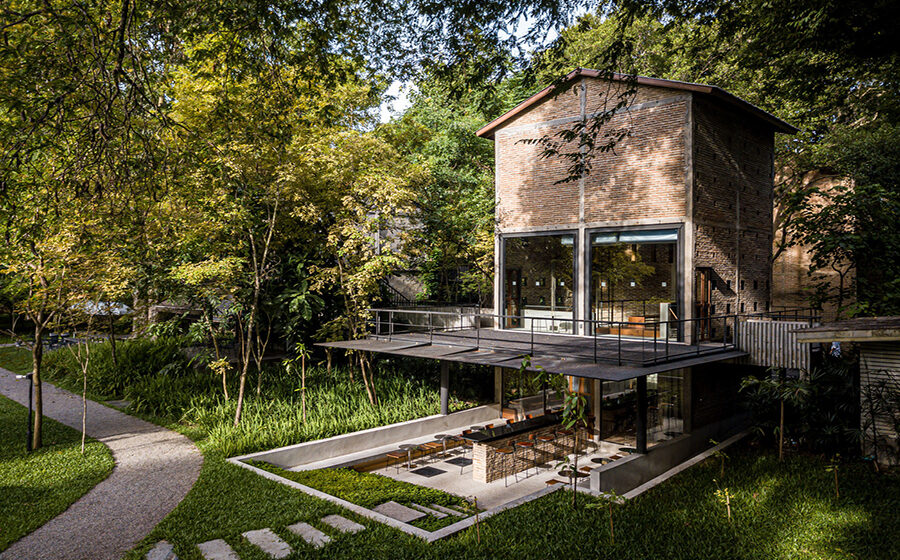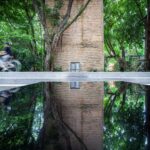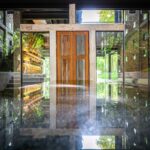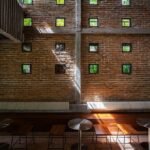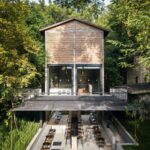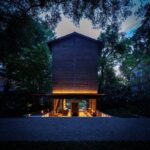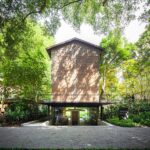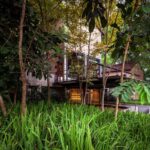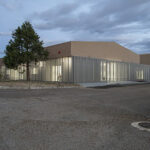Embracing Heritage Conservation
Kaomai Tea Barn, a brainchild of PAVA architects, stands as a testament to the art of adaptive reuse within the historic Kaomai Estate 1955. Situated amidst the rich tapestry of Chiang Mai, this project breathes new life into a multi-decade tobacco processing plant estate, which earned accolades in 2018 with the UNESCO Asia-Pacific Awards for Cultural Heritage Conservation.
Integrating with the Landscape
Rooted in a commitment to honor the site’s heritage while fostering connectivity with the surrounding environment, Kaomai Tea Barn serves as a nexus, linking Kaomai Avenue, the Amphitheater, and Kaomai Cafe. By respecting the estate’s original dimensions and architectural vernacular, the design seamlessly integrates with the existing landscape and surrounding heritage structures.
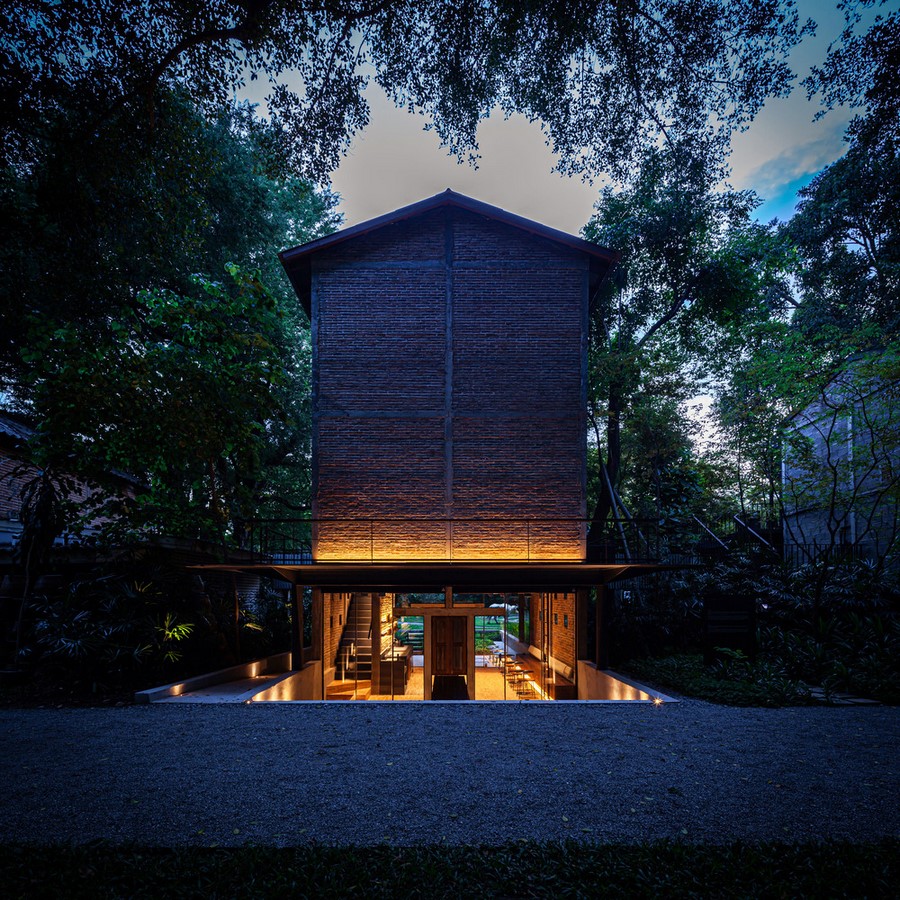
Illuminating Authenticity
The design ethos of Kaomai Tea Barn extends beyond mere preservation; it aims to illuminate the essence of the tobacco-drying barns through subtle yet transformative lighting features. By delicately integrating linear lighting and glowing downlights with locally sourced materials, such as concrete and timber, the space exudes an aura of authenticity while inviting visitors to embark on a journey through history.
Reviving Industrial Heritage
Employing the “Reconstruction Technique,” the project meticulously reconstructs the barns’ originality using modernized steel and reinforced concrete. This fusion of conservation practices with contemporary design aesthetics breathes new life into a once-overlooked industrial typology, preserving its legacy for future generations.
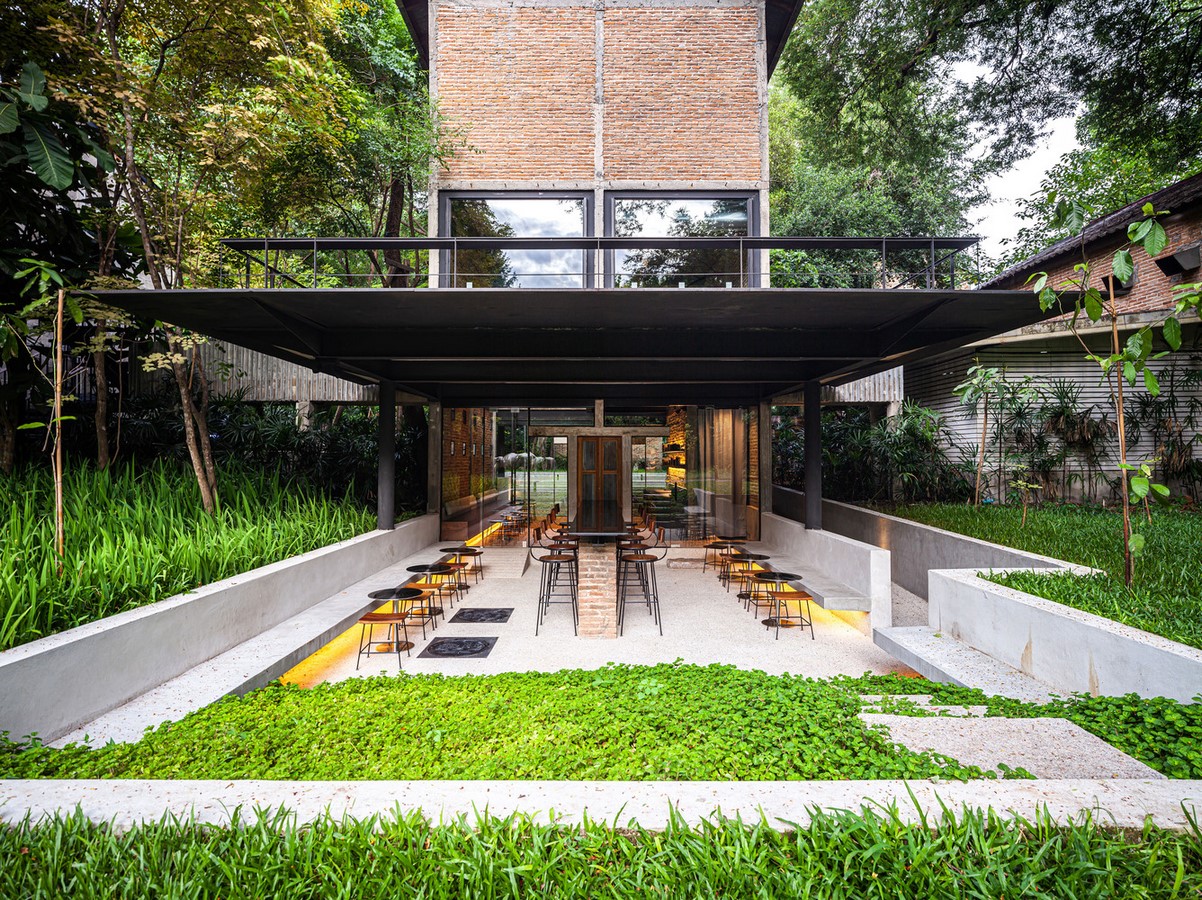
Fostering Sustainable Tourism
Underpinning the project is a commitment to “Historical and Ecological Tourism,” fostering economic, social, and environmental growth. By inviting visitors to immerse themselves in the estate’s rich history, native flora, and ecological wonders, Kaomai Tea Barn serves as a beacon of community engagement, social inclusion, and sustainable development.
Conclusion
Kaomai Tea Barn epitomizes the harmonious coexistence of past and present, weaving together strands of heritage conservation, architectural innovation, and ecological stewardship. As it beckons visitors to embark on a journey through time, this adaptive-reuse marvel stands as a testament to the transformative power of architecture in preserving our collective heritage.

